Vietnam’s culinary scene is rich and varied, with a focus on fresh and flavorful ingredients. One aspect of Vietnamese cuisine that stands out is the use of vegetables in many traditional dishes. During my time exploring Vietnam, I was amazed by the diversity and vibrancy of the country’s vegetable culture. From crisp and colorful leafy greens to hearty root vegetables, the range of products available was impressive.
It was fascinating to see how vegetables played a central role in Vietnamese cuisine, not just as side dishes, but also as the star of many dishes. Whether it was a simple stir-fry or a complex soup, the freshness and bold flavors of Vietnam’s vegetables made every meal a delight. Explore the rich variety of Vietnam vegetables, their culinary uses, and their importance in Vietnamese culture and health.
What are vietnam vegetables?
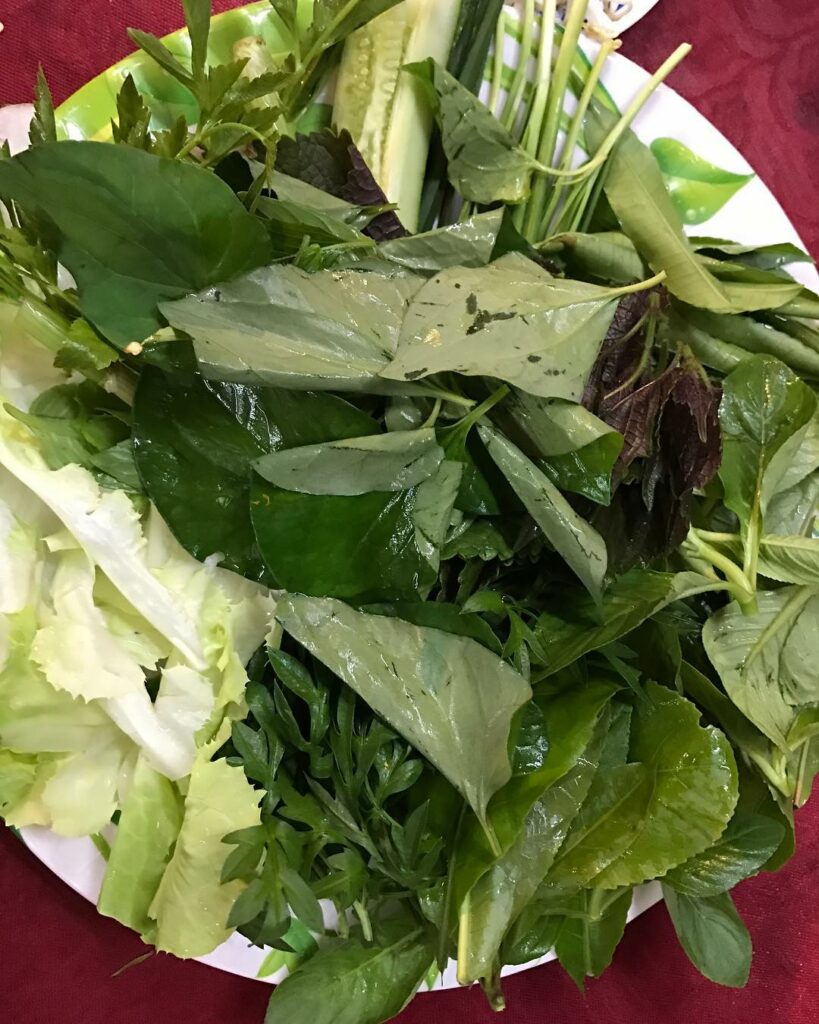
Vietnam’s agriculture is largely focused on rice cultivation, but the country also has a rich tradition of vegetable production. Vietnam vegetables come in a wide range of colors, textures, and flavors, and are a key ingredient in many traditional dishes.
Popular leafy greens include water spinach, mustard greens, and kale, while root vegetables such as daikon radish and taro are also commonly used. Legumes like mung beans and soybeans are staples in many Vietnamese dishes, and other vegetables such as eggplant and okra are also popular.
Vegetables from Vietnam play a vital role in Vietnamese cuisine, both as a main ingredient and as a side dish. They are also important for their nutritional value and health benefits, making them an essential part of Vietnamese culture and daily life.
What are popular vegetables in Vietnam?
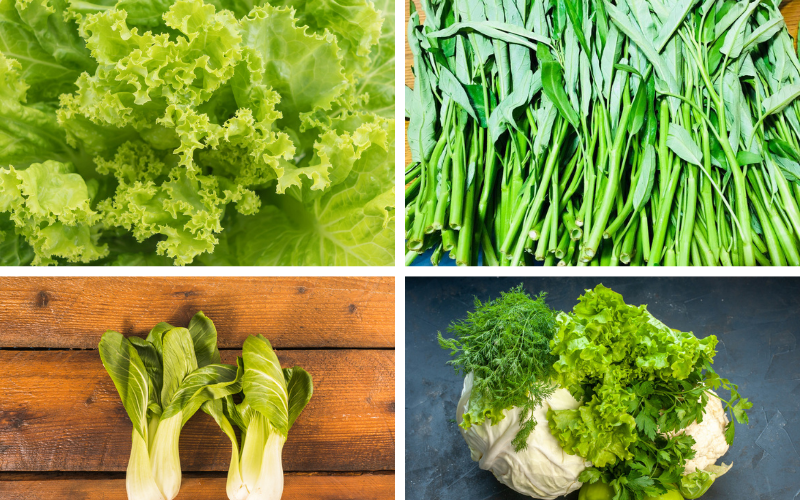
Vietnamese green vegetable list is also extensive and features a variety of leafy greens and herbs that are used to add flavor and nutrition to dishes. Vietnamese coriander, sawtooth herb, and watercress are just a few examples of these green vegetables. These vegetables are commonly used in soups, salads, stir-fries, and other Vietnamese dishes to create a delicious and healthy meal.
The importance of vegetables in Vietnamese cuisine cannot be overstated. Vegetables are not only delicious but also offer numerous health benefits. They are an essential component of a balanced diet and are often used in traditional Vietnamese medicine. Whether you’re a foodie or a health enthusiast, exploring the world of Vietnam vegetables is sure to be a rewarding experience. Here’s a Vietnamese vegetable list:
You will wonder “What vegetables do Vietnamese eat“, then here I will show you the top 10 vegetables that Vietnamese people often prepare in their meals. Here are the Vietnamese vegetables list with culinary uses:
Water spinach
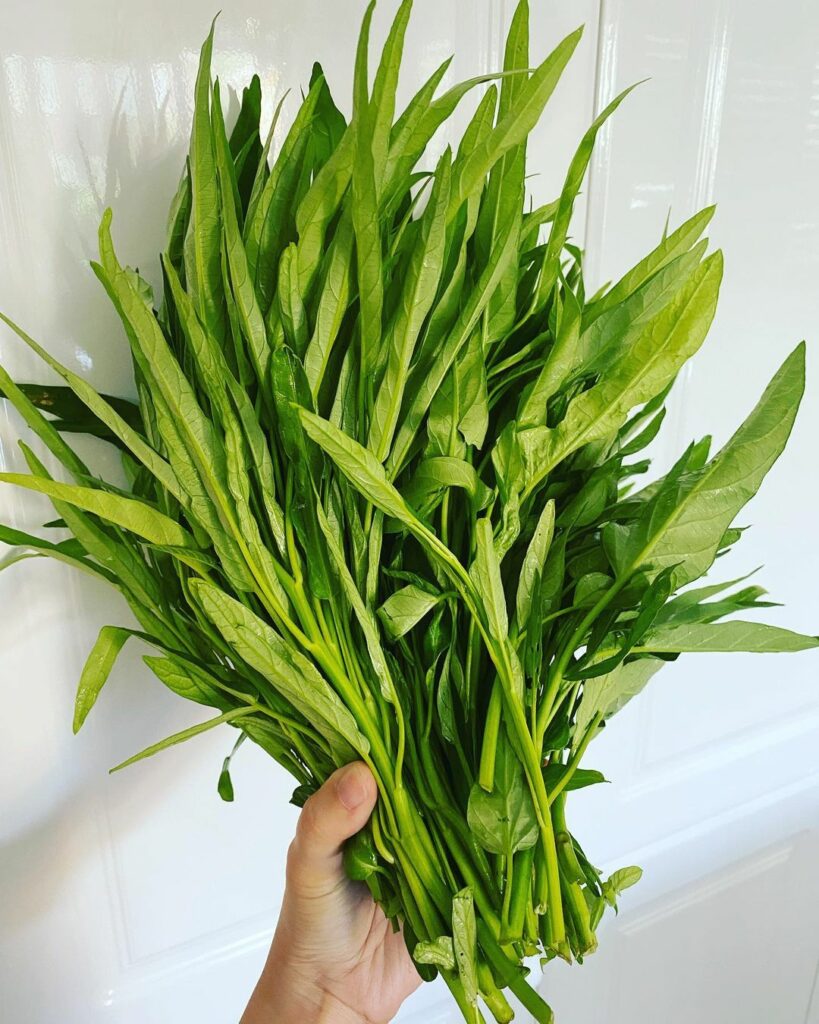
This green leaf is a popular ingredient in stir-fries and water dishes. As for the water dishes such as beef vermicelli, vermicelli, etc., people will scrape the water spinach stalks and then soak them in salt water to avoid darkening.
Mustard vegetables
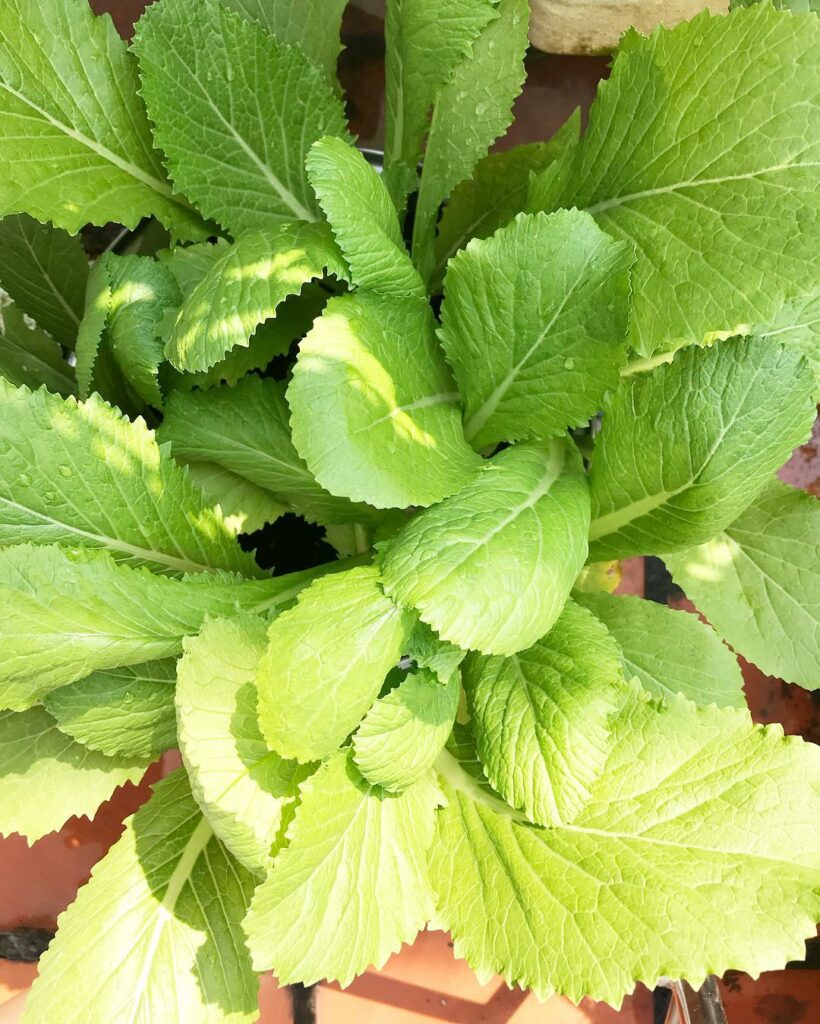
These green leafy vegetables have a pungent taste and are often used in soups, and stews and served with rolls such as banh xeo, banh khot, etc.
Kale
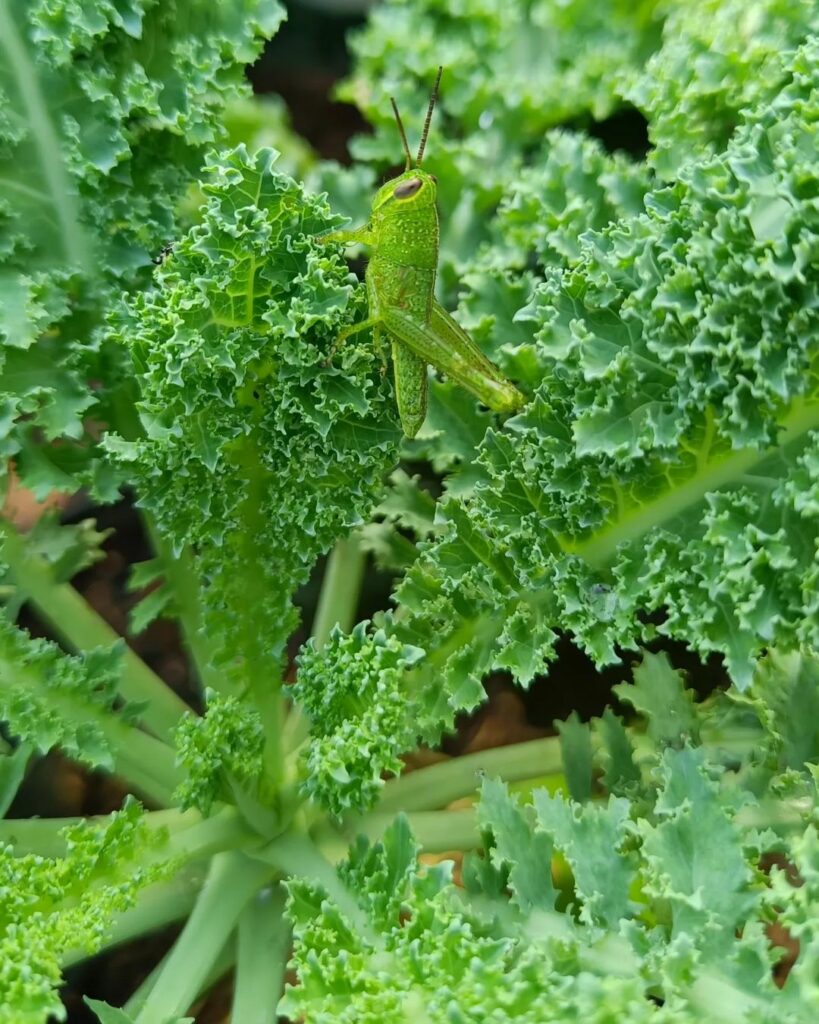
This nutrient-dense green leaf is often used in salads or as a side dish, steamed or sautéed.
Daikon radish
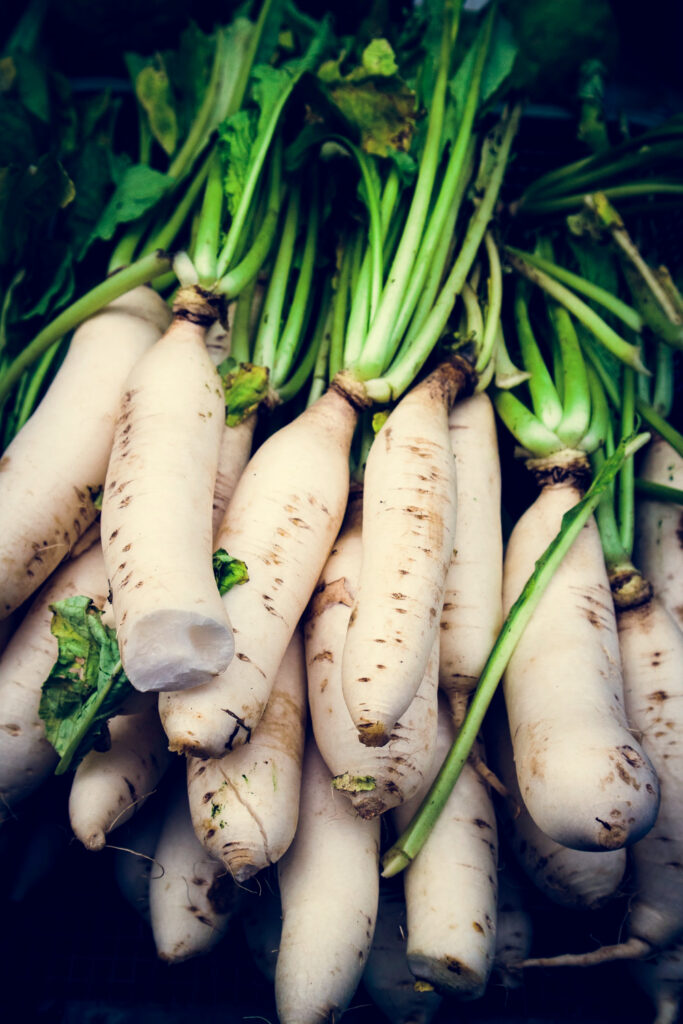
This root vegetable, often known as daikon radish, is versatile in Vietnamese cuisine. It is frequently pickled, creating the tangy and refreshing component of dishes like pickled banh mi. Additionally, it is commonly added to soups and stews to provide a slightly spicy flavor and a satisfying crunch.
Taro
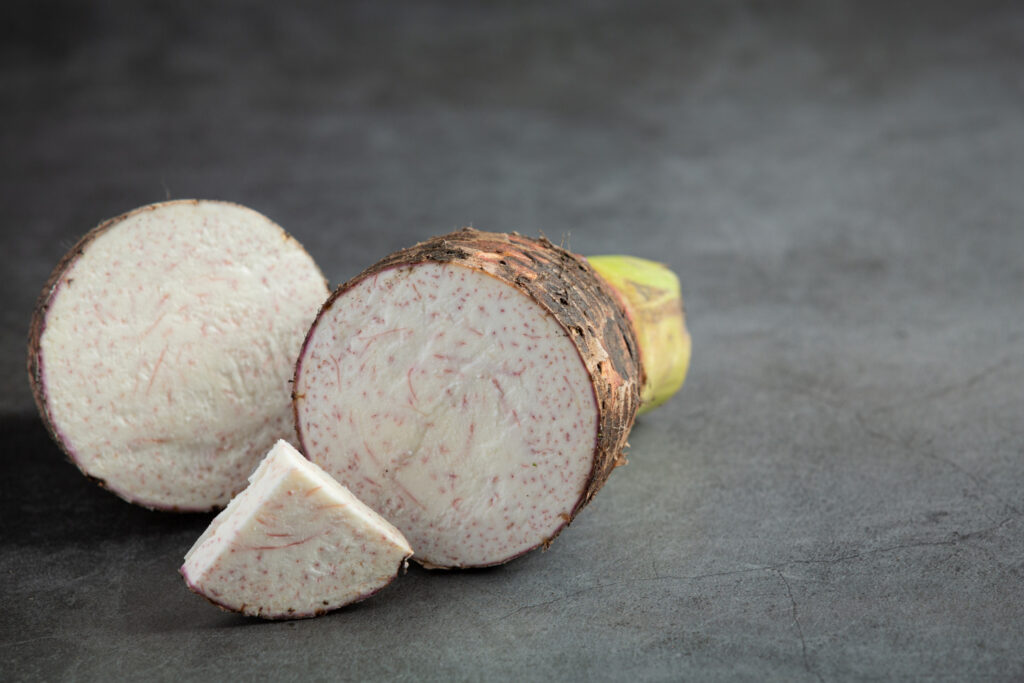
This starchy root vegetable, known as taro, is incredibly versatile in Vietnamese cuisine. It can be prepared in various ways, such as steaming, boiling, and frying. In addition to its culinary applications, taro is commonly used to make delicious desserts like taro pudding. Its unique properties lend a creamy texture and an earthy flavor when added to soups and stews.
Eggplant
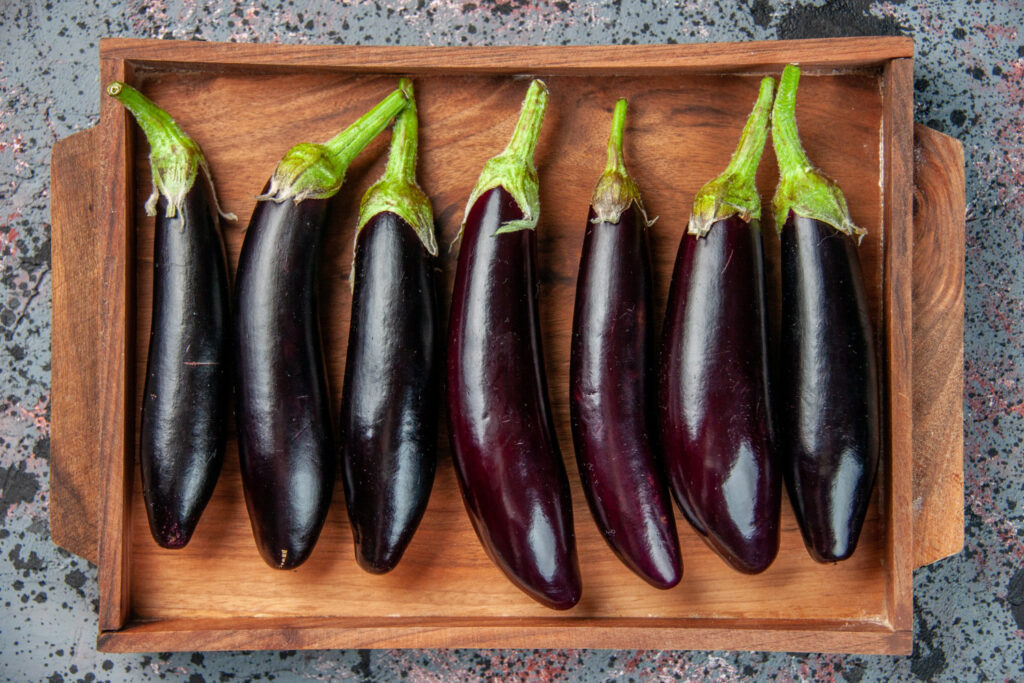
Eggplant, a versatile vegetable, is a popular ingredient in Vietnamese cuisine. It is commonly used in stir-fries, curries, and stews, adding its mild flavor and meaty texture to the dishes. Another delicious preparation featuring eggplant is eggplant tofu, where the tender eggplant is paired with tofu to create a flavorful and satisfying combination.
Okra
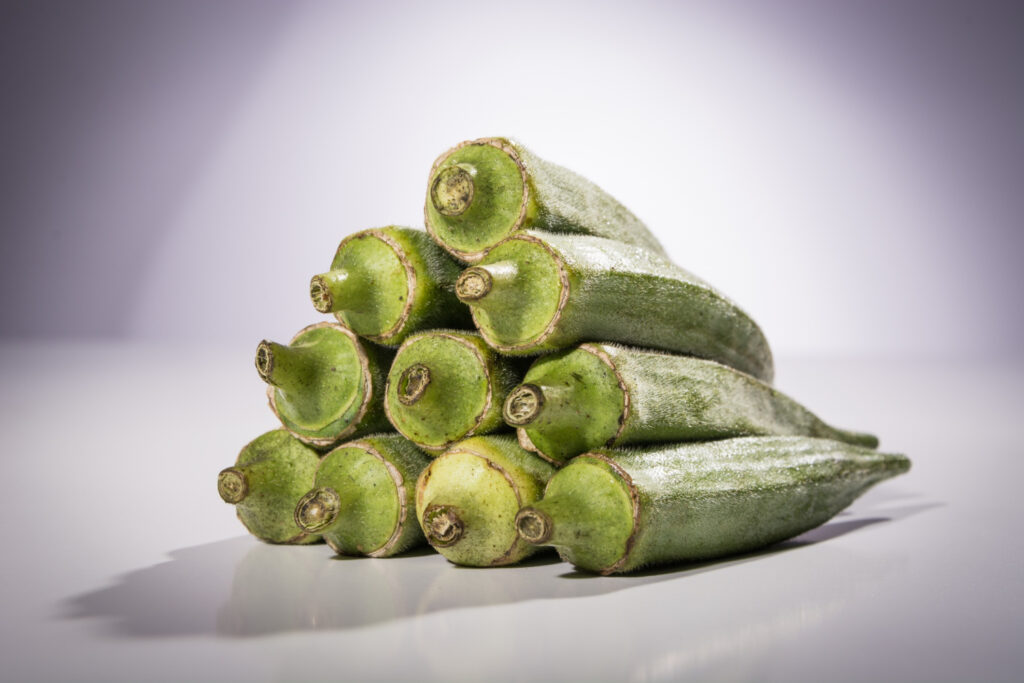
Renowned for its thickening prowess in soups and stews, okra takes on a prominent role in Vietnamese culinary traditions. However, this versatile vegetable offers much more than mere viscosity. With its intriguing blend of a subtly sweet and nutty flavor, okra adds a distinctive touch to dishes like canh chua – a captivating Vietnamese sour soup. Explore the realm of flavors as you savor the velvety texture and tantalizing taste of okra in this delightful concoction.
Bitter gourd

This bitter vegetable is often used in soups and stir-fries for its healing properties. It is believed to have hypoglycemic effects and is used in traditional Vietnamese medicine.
Bok Choy
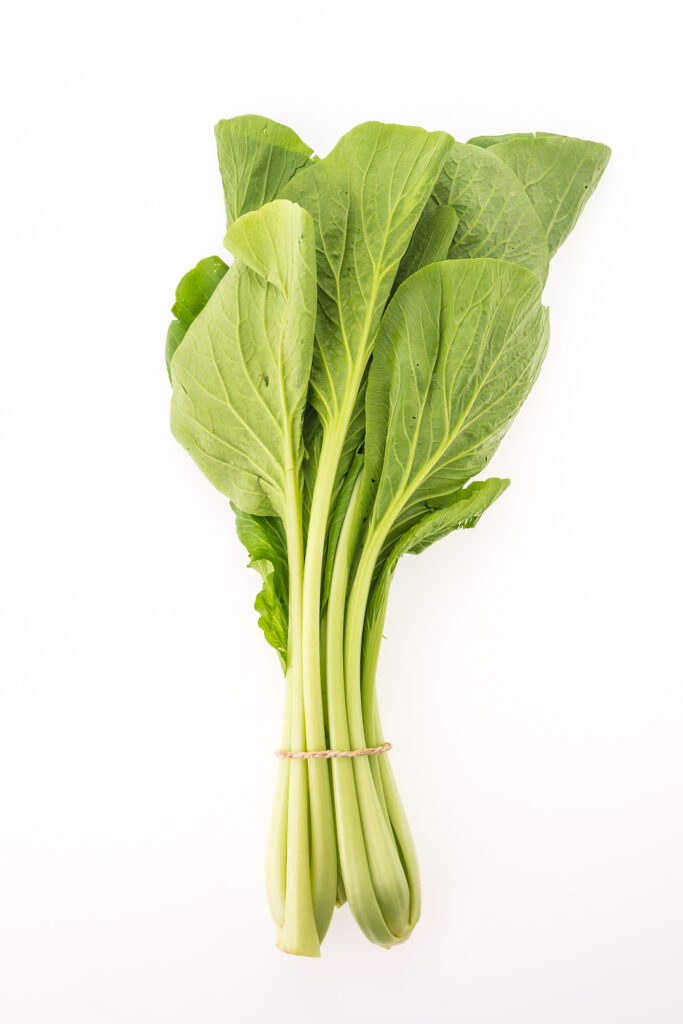
This leafy green is a member of the cabbage family and is commonly used in stir-fries and soups. It has a mild flavor and a crunchy texture. Bok choy can also be steamed or blanched and served as a side dish.
Cabbage

Cabbage, a versatile calciferous vegetable, holds a prominent place in Vietnamese culinary traditions. Its usage extends across a range of dishes, including stir-fries, soups, and salads. With its slightly sweet and earthy flavor, cabbage can be enjoyed both raw and cooked, lending its unique essence to a multitude of preparations.
One delightful example is Chicken Salad with Mangosteen, where the crisp cabbage leaves form the perfect base for a refreshing combination of flavors. Alongside the tangy pickled cabbage, the salad showcases the tropical sweetness of mangosteen, creating a harmonious blend that tantalizes the taste buds.
In Vietnamese cuisine, these vegetables are used in many different ways to create delicious and healthy meals. They are often sautéed, boiled or added to soups and stews, and seasoned with a variety of herbs and spices to enhance flavor.
What to serve with Vietnam vegetables?
vietnam vegetables can be served with a variety of dishes to create a balanced and flavorful meal. Here are some examples:
- Rice: Rice is a staple in Vietnamese cuisine and is often served with vegetables to create a simple and satisfying meal.
- Noodles: Vietnamese noodles, such as rice noodles or egg noodles, are a popular accompaniment to vegetables and can be used in soups, stir-fries, and salads.
- Tofu: Tofu is a versatile protein source that can be used in a variety of Vietnamese dishes. It pairs well with vegetables in stir-fries, curries, and soups.
- Meat or seafood: Grilled or sautéed meats or seafood can be served alongside vegetables for a more substantial meal. Some popular options include grilled pork, shrimp, or fish.
- Fresh herbs: Vietnamese cuisine is known for its use of fresh herbs, such as basil, cilantro, and mint. These herbs can be added to vegetable dishes to enhance their flavor and aroma.
- Dipping sauces: Vietnamese dipping sauces, such as nuoc cham or peanut sauce, can be served alongside vegetables for added flavor and texture.
Vietnamese vegetables can be served with a variety of dishes to create a flavorful and nutritious meal. Pairing them with rice, noodles, protein sources, fresh herbs, and dipping sauces can add depth and variety to your meal.
What are culinary uses of Vietnam vegetables?
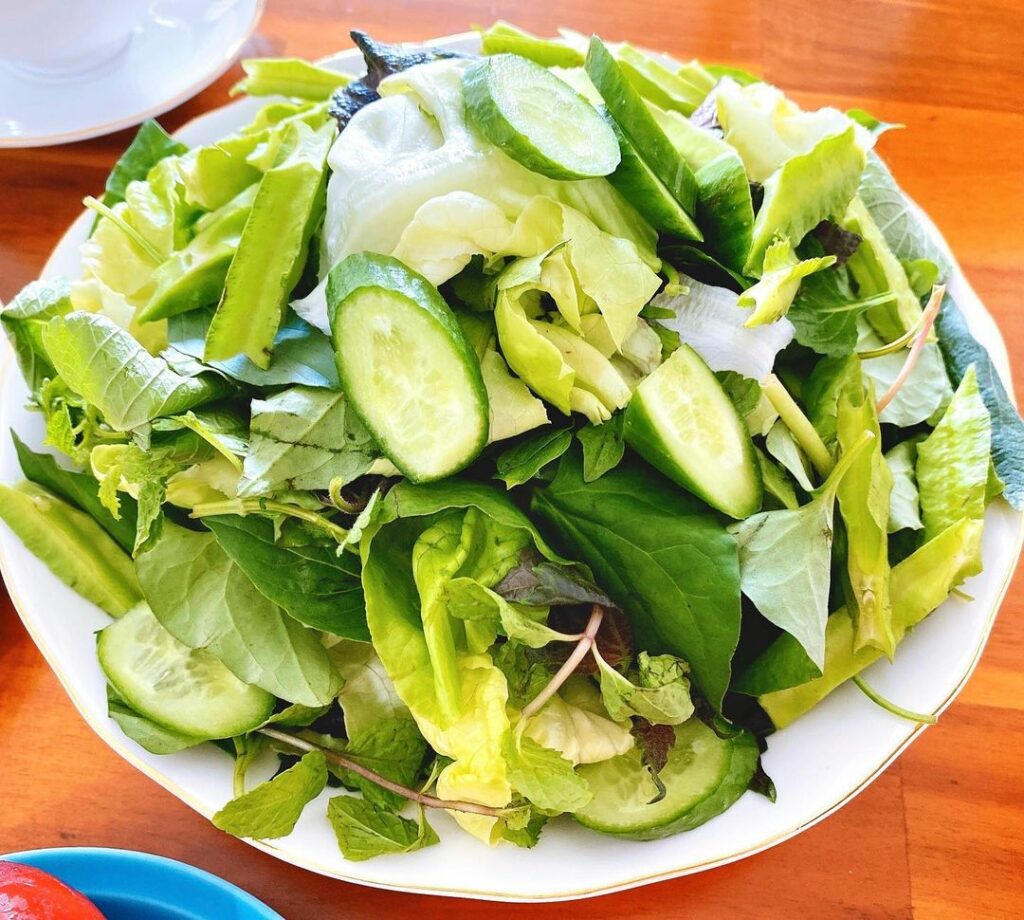
vietnam vegetables are an essential ingredient in many traditional dishes and offer a wide range of culinary uses. Here are a few examples:
Traditional dishes featuring vegetables
Many Vietnamese dishes feature vegetables as the main ingredient, such as stir-fried morning glory, a popular dish made with water spinach, and canh chua soup, a sour and spicy soup that often includes vegetables like okra and tomatoes.
Use of herbs and spices
Vietnamese cuisine is known for its use of herbs and spices to enhance the flavor of vegetable dishes. Popular herbs and spices include lemongrass, ginger, garlic, and chili peppers.
These ingredients are often used to make sauces and marinades that add depth and complexity to vegetable dishes.
Health benefits of Vietnam vegetables
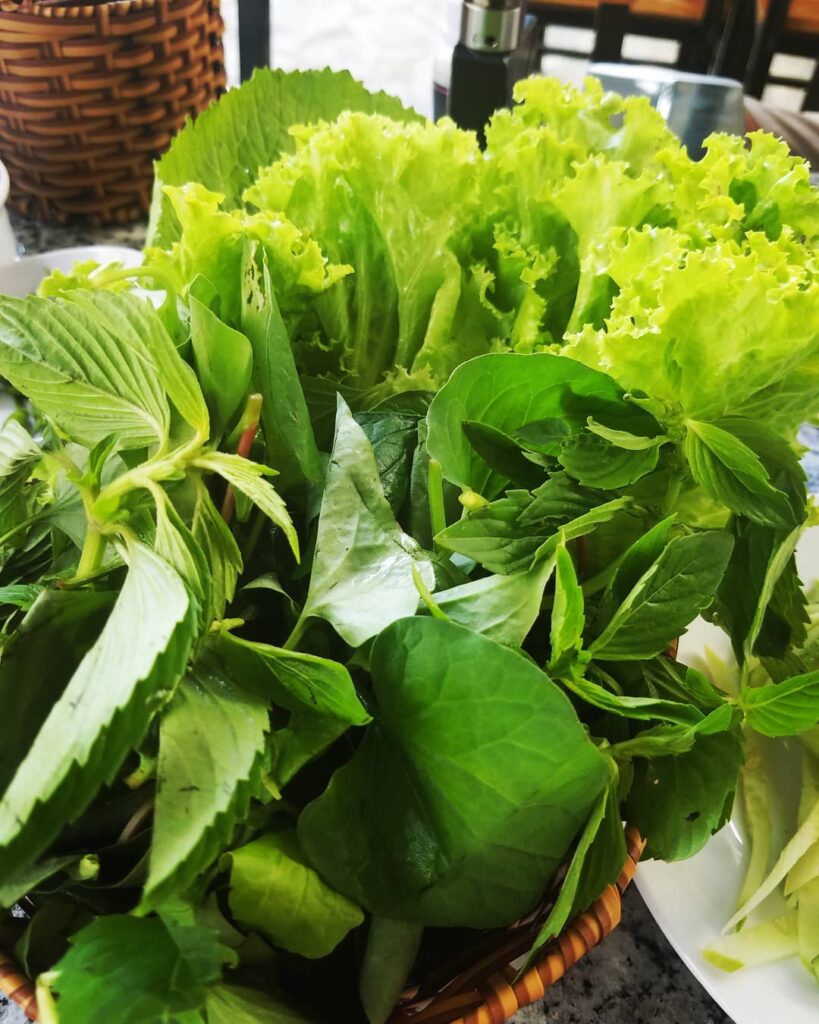
Vietnam vegetables offer numerous health benefits and are an essential component of a balanced diet. Here are a few ways that Vietnam vegetables contribute to overall health:
Nutritional value of different types of vegetables
vietnam vegetables are rich in vitamins, minerals, and antioxidants that help to support overall health. Leafy greens such as kale and water spinach are good sources of vitamin K, while root vegetables like daikon radish and taro are high in fiber and potassium.
Role of vegetables in the Vietnamese diet and overall health
Vegetables are a staple in the Vietnamese diet, and their consumption is associated with a reduced risk of chronic diseases such as heart disease and cancer. Vegetables also provide essential nutrients that support overall health and well-being.
Traditional Vietnamese cooking methods, such as stir-frying and steaming, help to preserve the nutritional value of vegetables. These methods are quick and use minimal amounts of water, which helps to retain the vitamins and minerals in the vegetables.
Incorporating Vietnam vegetables into your diet can provide a range of health benefits, from improved digestion to increased energy levels, weight loss, and more benefits of vegetables from Vietnam. With their diverse flavors and textures, Vietnam vegetables offer endless possibilities for creating healthy and delicious meals that support overall health and well-being.
How to store vietnam vegetables?
Vietnamese people store their vegetables in various ways depending on the type of vegetable, the climate, and personal preference. Here are some common methods:
- Refrigeration: Many Vietnamese people store their vegetables in the refrigerator to keep them fresh for longer periods of time. Vegetables that are sensitive to temperature changes, such as leafy greens or herbs, are usually kept in plastic bags to prevent wilting.
- Room temperature: Some vegetables, such as potatoes, onions, and garlic, can be stored at room temperature in a cool, dry place away from direct sunlight. This method works well in Vietnam’s warm climate.
- Pickling: Pickling is a common method of preserving vegetables in Vietnamese cuisine. Vegetables are soaked in a mixture of vinegar, sugar, and salt, and can be stored in airtight containers in the refrigerator for several weeks.
- Drying: Some vegetables, such as chili peppers or herbs, can be dried in the sun and stored in airtight containers for later use.
- Freezing: Some vegetables, such as green beans or broccoli, can be blanched and frozen for later use. This method is not as common in Vietnam as refrigeration or pickling.
Vietnamese people use a variety of methods to store their vegetables, depending on the vegetable and the circumstances. Refrigeration and pickling are two of the most common methods used in Vietnamese cuisine.
FAQs
Are Vietnam vegetables organic?
Not all Vietnam vegetables are organic, but there are organic farming practices in Vietnam. Some farmers choose to use natural and sustainable methods to grow their crops, such as composting, crop rotation, and natural pest control.
There are also organizations and certifications in Vietnam that promote and verify organic farming practices. However, it is important to note that not all farmers may have access to these resources or choose to adopt these methods, so it is best to do your research and choose your products carefully.
Are Vietnam vegetables expensive?
The price of vietnam vegetables can vary depending on several factors such as the type of vegetable, the season, the region, and the supply and demand. In general, vegetables in Vietnam are relatively affordable compared to many other countries. Local markets and street vendors often offer the best prices for fresh produce, while supermarkets may have higher prices.
Some vegetables, such as specialty or imported varieties, may be more expensive. However, overall, vietnam vegetables are considered to be reasonably priced and a good value for their quality and nutritional value.
What is su su vegetable in Vietnam?
Su su is a type of vegetable that is commonly found in Vietnam, also known as chayote or vegetable pear. It is a pear-shaped, light green vegetable that is a member of the squash family.
Su su has a mild, slightly sweet taste and a crunchy texture, similar to cucumber or zucchini. It is often used in stir-fries, soups, and salads in Vietnamese cuisine. Su su is also known for its health benefits, as it is a good source of fiber, vitamin C, and potassium.
What is Bau Vietnamese vegetable?
Bau is a type of Vietnamese vegetable, it is a long, narrow vegetable with a light green color and a slightly curved shape. The flesh is white and spongy, with small seeds in the center.
Bau has a mild flavor and a slightly crunchy texture, similar to zucchini or cucumber. It is a versatile vegetable that can be used in a variety of Vietnamese dishes, including stir-fries, soups, and stews. Bau is a good source of fiber, vitamin C, and potassium, and is often used in traditional medicine for its health benefits. It is believed to have cooling properties that can help soothe the digestive system and promote overall health.
Why does Vietnamese food have so many vegetables?
Vietnamese cuisine is known for its fresh, flavorful, and healthy dishes that incorporate a variety of vegetables. There are several reasons why vegetables are such a prominent part of Vietnamese food:
- Climate: Vietnam has a tropical climate that is conducive to growing a wide range of vegetables year-round. As such, vegetables are plentiful and readily available in local markets.
- Health benefits: Vegetables are an important part of a healthy diet and are known for their high nutritional content, fiber, and antioxidants. Vietnamese cuisine emphasizes fresh, nutrient-rich ingredients that are beneficial for overall health.
- Culinary traditions: Vietnamese cuisine has a long history of using fresh vegetables in its dishes, influenced by Buddhist vegetarianism and a focus on balance and harmony in cooking.
- Balanced flavors: Vietnamese cuisine is known for its balance of sweet, salty, sour, and spicy flavors, and vegetables play a key role in achieving this balance.
- Vegetarian options: Many Vietnamese dishes are vegetarian or can be easily adapted to be vegetarian by using tofu or other plant-based protein sources. Vegetables are often used in place of meat in these dishes.
Vegetables are an integral part of Vietnamese cuisine and are used in a variety of ways to create delicious and healthy dishes.
How do I choose fresh vietnam vegetables?
Choosing fresh vietnam vegetables is important to ensure that you get the best flavor and nutritional value from your produce. Here are some tips to help you choose fresh vietnam vegetables:
- Look for vibrant colors: Fresh vegetables should be brightly colored and free from discoloration or bruising.
- Check for firmness: Vegetables should be firm and have a slight give when pressed. If they are too soft or mushy, they may be overripe or spoiled.
- Smell the vegetables: Fresh vegetables should have a pleasant, earthy aroma. If they smell musty or sour, they may be past their prime.
- Check the leaves: If you are buying leafy vegetables like herbs or lettuce, check the leaves for signs of wilting or browning.
- Check the stems: Stems should be crisp and green, not slimy or discolored.
- Buy in season: Vegetables that are in season are likely to be fresher and have better flavor than those that are out of season.
- Shop at local markets: Local markets often offer the freshest vegetables, as they are sourced directly from local farmers.
Which vegetables in Vietnam are toxic?
Like in any country, there are some vegetables in Vietnam that can be toxic if not prepared or consumed properly. Here are a few examples:
- Bitter melon: Bitter melon contains a substance called momordicin, which can cause digestive issues if consumed in large quantities. It is generally safe to eat in moderation, but pregnant women should avoid it.
- Cassava: Cassava is a starchy root vegetable that contains cyanide, a toxic substance. It is safe to eat when cooked properly, but consuming raw or undercooked cassava can be harmful.
- Bamboo shoots: Bamboo shoots contains cyanogenic glycosides, which can be toxic if consumed in large amounts. They are generally safe to eat when cooked but should be in large quantities.
- Water spinach: Water spinach, also known as morning glory, can accumulate toxic nitrates if grown in contaminated water. It is generally safe to eat when grown in clean water and cooked thoroughly. In addition, if you have large wounds, water spinach will make you swollen with pus, so doctors recommend avoiding eating spinach when you have an open wound.
- Mushrooms: Some wild mushrooms in Vietnam can be toxic if not properly identified and prepared. It is best to buy mushrooms from reputable sources or stick to cultivated varieties.
Which vegetables in Vietnam are good for pregnant women?
There are many vegetables in Vietnam that are good for pregnant women as they provide essential nutrients for both the mother and the growing baby. Here are some examples:
- Sweet potato: Sweet potatoes are a good source of fiber, vitamin C, and beta-carotene, which is important for fetal development.
- Spinach: Spinach is high in iron, which is essential for healthy blood cell formation in the fetus.
- Broccoli: Broccoli is rich in folate, which helps prevent birth defects and is important for healthy brain development.
- Carrots: Carrots are a good source of vitamin A, which is important for healthy eyesight and skin development in the fetus.
- Green beans: Green beans are high in folic acid, which helps prevent birth defects and is important for healthy fetal development.
- Cabbage: Cabbage is rich in vitamin C and fiber, which helps support a healthy immune system and digestive system.
- Eggplant: Eggplant is high in folate and potassium, which is important for healthy fetal development and maintaining proper blood pressure.
A varied and balanced diet that includes a variety of vegetables is important for pregnant women. It is always a good idea to consult with a healthcare provider or nutritionist for personalized advice on a healthy diet during pregnancy.
Which vegetables from Vietnam help to enhance eyesight?
There are several vegetables in Vietnam that are believed to be beneficial for enhancing eyesight. Here are some examples:
- Carrots: Carrots are a rich source of beta-carotene, which is important for healthy eyesight. Beta-carotene is converted into vitamin A in the body, which helps maintain the health of the eyes.
- Spinach: Spinach is high in lutein and zeaxanthin, which are antioxidants that help protect the eyes from damage caused by free radicals.
- Sweet potatoes: Sweet potatoes are a good source of beta-carotene, which is important for healthy eyesight.
- Broccoli: Broccoli is rich in vitamin C and beta-carotene, which help protect the eyes from damage caused by free radicals.
- Bok choy: Bok choy is a good source of beta-carotene, vitamin C, and vitamin A, all of which are important for healthy eyesight.
- Kale: Kale is high in lutein and zeaxanthin, which are antioxidants that help protect the eyes from damage.
- Bell peppers: Bell peppers are a good source of vitamin C, which is important for healthy eyesight.
Incorporating these vegetables into a balanced and varied diet, along with regular eye exams and healthy lifestyle habits, can help promote and maintain healthy eyesight.
Conclusion
In the final analysis, vietnam vegetables play a vital role in the country’s cuisine and are an important source of nutrition and flavor. Vietnam’s tropical climate and fertile soil provide ideal growing conditions for a wide variety of vegetables, and as a result, many Vietnamese dishes are packed with fresh, healthy ingredients.
From the crunchy texture of su su to the earthy aroma of basil, vietnam vegetables offer a unique and diverse culinary experience that is both delicious and nutritious. As consumers become more aware of the health benefits of fresh produce and sustainable farming practices, the future of vegetable farming in Vietnam looks bright.
With its focus on fresh, local, and healthy ingredients, Vietnamese cuisine is sure to remain a popular choice for foodies and health-conscious diners alike.